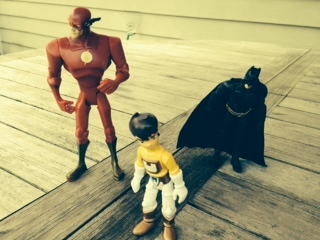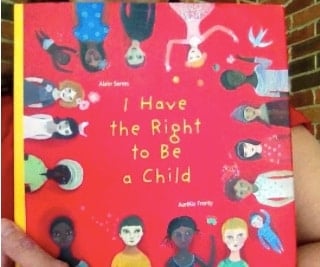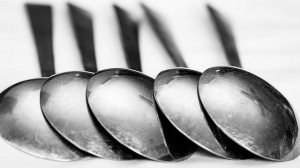
TEXAS, USA: The Court Jester
 Summer break is upon us once again. With summer, comes sleeping in, summer vacations, and eating sweet watermelon every day. However, there is something else that sneaks its evil little way into summer as well…. (more…)
Summer break is upon us once again. With summer, comes sleeping in, summer vacations, and eating sweet watermelon every day. However, there is something else that sneaks its evil little way into summer as well…. (more…)

 Summer break is upon us once again. With summer, comes sleeping in, summer vacations, and eating sweet watermelon every day. However, there is something else that sneaks its evil little way into summer as well…. (more…)
Summer break is upon us once again. With summer, comes sleeping in, summer vacations, and eating sweet watermelon every day. However, there is something else that sneaks its evil little way into summer as well…. (more…)

 It’s mid-winter in New Zealand. The air is crisper than I’ve felt it for a while, the leaves have pretty much fallen and we have had the shortest day of the year.
It’s mid-winter in New Zealand. The air is crisper than I’ve felt it for a while, the leaves have pretty much fallen and we have had the shortest day of the year.
This week also saw the appearance of the star cluster, Matariki, (The Pleiades), which heralds the Maori New Year.
This was not a festival I had ever heard of growing up but it has been revised and reinstated and there are now celebrations being held all around New Zealand. While different tribes traditionally celebrated Matariki in their own fashion, now it is universally marked by the new moon and rising of the Matariki star cluster with festivities running from 1st June to 30th July.
Traditionally, Matariki was a time of celebration, important for navigation and the timing of the seasons. It was particularly relevant to the preparation of the ground for the upcoming growing season and offerings to the gods, and specifically, Rongo, the Maori god of cultivated food.
Only a few New Zealand schools consistently mark mid-winter and Matariki but for our boys’ school, festivals are an important part of the culture and I have two mid-winter events to attend this coming week.
On Wednesday evening, my youngest son has a lantern walk through a public garden. Imagine a waterfall and a large pond with a bridge over it and a stream running throughout. Imagine 30 or so small (3-6 year-old) children clutching a paper lantern with a candle in one hand and a parent’s hand in the other as we meander through the park in, otherwise, pitch black. We will wander past tiny grottos of handmade gnomes and crystals, we will attempt to sing (although for the children, it’s enough that they manage to walk and stay upright!) and we finish gathered together, munching on a star shaped, ginger or shortbread biscuit.
On Thursday evening, my older sons have their mid-winter festival, beginning with a shadow play performed by their teachers. After the play, the children who are between 10 and 14 gather in small groups amongst the trees at school and the youngest children, guided by their lanterns and teachers, meander from group to group and hear the older children entertain them with a song, or a poem or a tune. The 10 year-olds then follow behind the youngest to see the older children’s performances and the 11 year-olds follow them, and so on. They will finish with their classmates and a biscuit and warm drink.
The magic in these events is heart-warming and the children just seem to absorb the atmosphere; they appreciate the small snippets of light amongst the darkness, the companionship, the quiet musicality of the ’entertainment’ and especially the sharing of food at the end! (So do I.)
Do you celebrate mid-summer and mid-winter? How do schools where you live mark these seasonal events?
Sources: NZ Ministry of Culture and Heritage; Wikipedia
This is an original post to World Moms Blog by our writer and mother of three boys in New Zealand, Karyn Van Der Zwet.
The image used in this post is credited to Wikipedia images with editing from Dayne Laird (Ministry for Culture and Heritage, NZ)

Below is a guest post by Joanna Landau, the founder of Kinetis. I turned to her when I was struggling to write a post about 3 teenagers kidnapped in Israel by terrorists. I knew I wanted to bring attention to the situation because I have been appalled at the lack of press this situation was getting around the world. Fellow World Moms confirmed for me that in their respective countries, the news was getting close to no coverage and in many instances, no coverage at all. Yet here in Israel, no one has thought about anything else for the past 6 days. Joanna has managed to capture all my thoughts and feelings. Please share her message.
The phone rings. “Hey, Mom, it’s me”, your 16 year old son says, “I’m on my way home”. You put the phone down, and go back to whatever it is you’re doing. An hour later, you start to worry, he’s not answering his phone. Two hours later you and your husband start to panic, you call friends, relatives, start canvassing the neighborhood. Three, four, five hours later, you know something’s happened. And then you realize you’ve joined that awful statistic, something’s happened. Turns out your son hitchhiked his way home with a couple of friends, and has been kidnapped. Your worst fears have come true. And now what? What would you do to bring him back, assuming the police are doing everything they can to find him?
There’s a boy called Naftali, and he was kidnapped together with his friends Gilad and Eyal 6 days ago. Naftali called his mother, a half an hour before he got into the car.
This is not a hypothetical situation. It happened in Israel and you may have not heard of it, because it sounds like the kind of thing that can happen in a place where there’s a conflict going on.
And some may put a political twist on it, bringing in all sorts of issues that can cloud the basic, simple fact that three youngsters have been kidnapped.
In Israel it’s the only thing on our mind, as a nation fears for three kids, not soldiers, who have disappeared, apparently taken by terrorists. But it’s not a political story: for every mother, wherever you live, it’s a personal story. Because these things can happen anywhere, and children and teens have become innocent victims of the evils of this world.
In America it may be from a shooting spree at a school, in Nigeria it’s girls at a boarding school. In any country, it may be a bitter divorced parent who takes their kids without telling the ex-spouse; or it can be a sick person who preys on children. Kidnapping can be anywhere, it can happen to anyone.
Gilad, 16 years old, likes to bake and volunteers with youth his age. Apparently, when he steps into a room, his smile lights it up. Naftali plays the guitar, loves football and is an excellent student. Eyal is 19, likes to sing, and sang at his cousin’s wedding not long ago. These are kids, just like yours. They don’t represent the state, they probably never imagined they would. But everyone is turning this into a political, or diplomatic discussion. It’s not. It’s about how fragile this world is and whether you care.
Imagine it was your kid who phoned 6 days ago. Imagine what you’d be feeling today, knowing he’s in the hands of merciless terrorists, or worse. I’m usually a very positive person, with an optimistic outlook on life and a constant desire to make the most of what we have. But as I look at my own three kids, who are 12, 10 and 7 and home safely with me, I wonder how Naftali, Gilad and Eyal’s parents must be feeling.
Premised on the #BringBackOurGirls campaign to raise awareness for the kidnapping of the Nigerian girls, a campaign to #BringBackOurBoys has also exploded online. But only in Israeli and Jewish circles, and hardly in traditional global media sources. Because everyone else is looking at this and just moving on.
If you’re a mother, and you understand how it feels to love your child, and if you believe that children, more than anyone, are innocent until proven guilty, you can’t and shouldn’t remain indifferent to this incident. If you have a 16 or 19 year old kid, hug them tonight, and if these words resonate with you, snap a quick selfie together and help the world #BringBackOurBoys .
 Photo Credit: Maya Ben-David & Avner Seliger
Photo Credit: Maya Ben-David & Avner Seliger
This was an original guest post for World Moms Blog by Joanna Landau.
Joanna Landau is the mother of 3 as well as the Founder & Executive Director of Kinetis, a non profit social startup promoting Israel as a hub of creativity and innovation. Kinetis brings leading bloggers from around the world to Israel to experience it for themselves. In addition, Kinetis operates educational programs in Israeli schools, the Army and Universities that aim to reignite national pride.

 I often say that I think moms have super powers. I genuinely, truly believe it. They might not be as flashy as climbing up walls – although figuratively, I do that on a daily basis – or flying from roof tops and landing on our feet with our hair perfectly combed. But still, superpowers they are!
I often say that I think moms have super powers. I genuinely, truly believe it. They might not be as flashy as climbing up walls – although figuratively, I do that on a daily basis – or flying from roof tops and landing on our feet with our hair perfectly combed. But still, superpowers they are!
Like being invisible: when you are trying to make your kids do something and they ignore you because they cannot see or hear you. Ha! How cool is that? Or being able to step in a basement so messy that not even a pet wants to risk a paw, and tidying it up with a few magic words – like “Are you kidding me?”, “Unbelievable!” – and a wave of our magic wand. If these are not super powers, then I don’t know what qualifies!
My favorite mom super power is our ability to predict the future. Try to beat that, Superman!!
For example, I can guarantee, with 100% accuracy that the following is going to happen to you today:
None of these so-called “real” super heroes below can beat our gift. Batman kinda flies, but who doesn’t? Ben 10 can change into various creatures. Pfff, why is that even useful? As for the red guy, I can’t remember who he is. But he couldn’t get away with dressing like that unless he was a super hero.
What about you? What are the predictable moments in your day-to-day family life?
This is an original post to World Moms Blog by Nadege Nicoll. She was born in France but now lives permanently in New Jersey with her family. Nadege also writes a daily blog for moms who need to smile at everyday life. She can be found on Twitter, Facebook and her website www.nadegenicoll.com.
Photo credit to the author.

I’ve recently introduced a picture book into my family’s reading time called “I Have the Right to Be a Child” by Alain Serres. With beautiful simplicity, the book provides the author’s interpretation of the United Nations Convention on the Rights of the Child. The Convention includes things like rights to education, gender equality, nutrition, health care, free speech, freedom from child labor, safety, etc. For kids, the book is a conversation starter about human rights. We talked a lot about the question, “What are rights and what are privileges?” For adults, the book is a reminder that these concepts really are not that complicated. It may be complicated in the implementation of granting rights, but when the rights themselves are asserted in the simple language of the children the Convention seeks to protect, it all becomes much more clear.
This is probably the first time my kids saw human rights presented in a way that was meaningful to them. In American museums and text books, the right to vote for women and people of color seems faraway and a “done deal.” They don’t think of those rights as things we continually need to address here and in other countries. My children often help me advocate to give children in developing countries access to school and vaccines, but the language of “rights” isn’t always included in those kinds of discussions.
My youngest really latched on to the page that said,
“I have the right to express myself completely freely, even if it doesn’t always please my dad, and to say exactly how I feel, even if it doesn’t always please my mom.”
We have a lively ongoing debate about how that plays out. If she has the right to express herself completely freely, how might that compete with my perceived right not to be disrespected in my own home or the rights of her other friends and family members?
It might be surprising to Americans to learn that while 194 states in the world have agreed to the Convention, the U.S. has not officially ratified it. In fact, every member of the United Nations except Somalia, the United States, and South Sudan are party to the Convention, having agreed to change or make laws and to develop practices and programs to support it. The U.S. has signed to show support, but hasn’t “ratified” it. Ratification requires being bound by international law and having to report regularly to the UN Committee on the Rights of the Child, which monitors compliance.
Why hasn’t the U.S. ratified? Katie Jay – author of the “Children Deserve Families” blog told me that recognizing that children have a right to a safe and secure permanent family is cutting edge human rights law. The idealistic part of me scoffs at that, saying;
“Really? Cutting edge? To provide security, safety, and nourishment to children is cutting edge?” But the lobbyist part of me knows that it can sometimes be a tricky thing for a country to formally declare something as a “human right.”
Because once you officially do that, then you have to do something about it…or be held accountable by an international authority and possibly give up your moral high ground if you are then seen as a country that doesn’t live up to its own standards. Sadly, from the standpoint of an American citizen who has watched our behavior on international environmental agreements with dismay, I can tell you that Americans generally don’t like the idea of international authority holding us accountable for just about anything.
Has your country ratified the Convention? Take a look at this paraphrased list of rights for children from the book and consider which of them you think are rights or privileges. Are all of them rights? What would be the ramifications for your country to truly grant that right in your country? Internationally? What benefits or problems do you see that could arise if the world embraced the Convention wholeheartedly?
This is an original post written for World Moms Blog by Cindy Levin.

 Recently, I’ve been reading about the Spoon Theory (also sometimes called the token theory). The idea is that we’re all given a certain amount of spoons (or tokens) each day—metaphorically of course–to spend on all the things that we need to get done during the day.
Recently, I’ve been reading about the Spoon Theory (also sometimes called the token theory). The idea is that we’re all given a certain amount of spoons (or tokens) each day—metaphorically of course–to spend on all the things that we need to get done during the day.
It is usually applied to explain disabilities or chronic illnesses, which often can’t be seen but still make people’s lives difficult (like Lupus, Chronic Pain or Aspbergers). But I actually think that, without dismissing the experiences of these people, the spoon theory also can be expanded to include moms.
Just think of all the things you have to do during the day, and then imagine doing them without children. You wouldn’t even have to think when you got dressed in the morning. Eating breakfast would be simple and effortless. You’d be able to get out of the house in a matter of minutes and you might even be able to get places on time.
When you’re a mom, suddenly everything takes more time. You don’t only have to make breakfast for yourself, you make it for one, two, three, or more people. Here go three spoons- and I don’t mean the ones you use to eat breakfast.
You want to get out of the house. You put your coat on, your children’s coats on. Your price in spoons depends on the amount of children you have and the season- less children cost less spoons, winter is more expensive than summer.
Whatever you do, whether you are a working mom or a SAHM, you likely will be out of spoons by the end of the day. Some days are better and you may even have a few spoons left. Some days are horrible and you run out of spoons before noon. The unexpected temper tantrum costs a spoon or three. Taking your child to the hospital because he’s sick is another five spoons.
Remember, you only get a certain amount of spoons per day and that amount is limited. You can borrow the spoons from the next day but that could be the very day your child gets sick or when she decides that from now on, she will absolutely refuse to do whatever you ask her to do.
But not all moms are given equal amounts of spoons. Some have less than others. These are the moms who have disabled children. These are single moms with two jobs and no support. These are the moms all over the world living in poverty. They struggle every day to provide the best for their children. Yes, parenting under such circumstances is definitely more spoon-costly.
But it isn’t easy even for a family without such challenges. So what can we do? Spend our spoons wisely. Prioritize.
For example, in my case, perfectly folded laundry isn’t worth a spoon but a nicely prepared dinner most definitely is. We can try to replenish our spoons by getting some me-time. We can remember to sleep. We can get help- whether it’s from family, friends or childcare.
These are the things we can do for ourselves. But there are also things we can do for others. When thinking about how to spend your spoons or tokens, please set aside a certain amount for your fellow moms. You can do it by offering support. Offer a shoulder to cry on, extend your helping hand, say encouraging words.
It may seem like spending your own precious spoons but it is really a kind of investment. Because any price is easier to pay if everyone pitches in.
But, all economic and metaphorical imagery aside, I just want to point out the obvious: motherhood is hard. Let’s be kind to ourselves. And let’s help each other out.
Of course, we don’t really need such theories to explain how hard it it so be a mom. But I thought the spoon theory is a rather good way to illustrate the challenges of motherhood.
What are you thoughts on this? Is it helpful to think of your day in terms of having a limited number of spoons (or tokens) to spend?
This is an original post to World Moms Blog from our Polish writer in the Netherlands, Olga Mecking.
The image used in this post is credited to Nicki Mannix. It holds a Flickr Creative Commons attribution license.